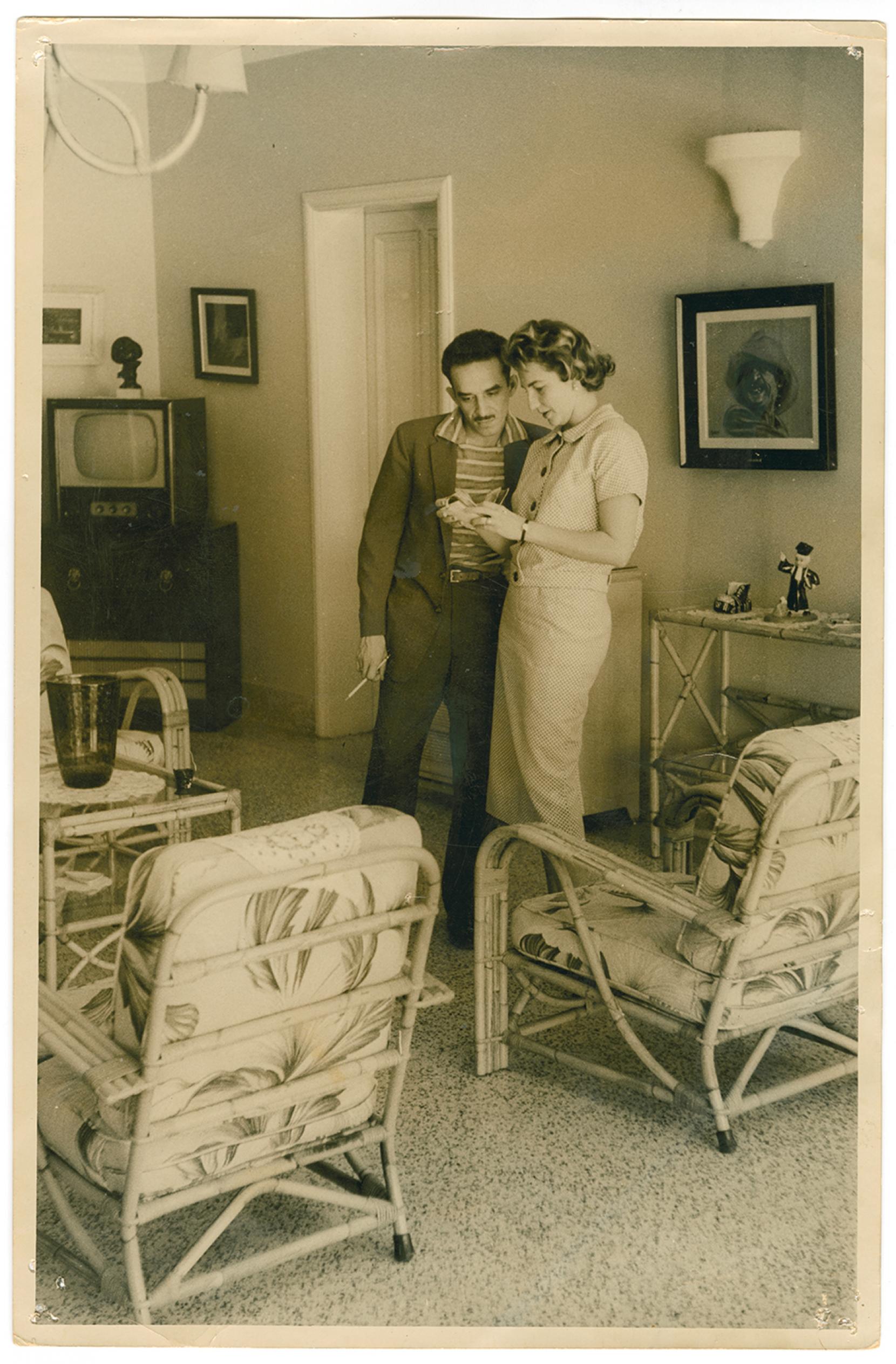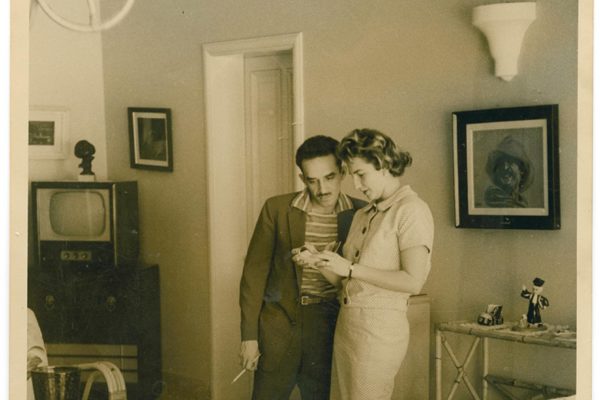
AUSTIN, Texas — More than 27,000 images from Nobel laureate Gabriel García Márquez’s archive are now online. A significant portion of the archive is accessible, including materials from all of García Márquez’s works of fiction, 22 personal scrapbooks and notebooks, a memoir, screenplays, photographs and ephemera.
View at http://hrc.utexas.edu/
“Anyone with access to the internet can have an in-depth look at García Márquez’s archive,” said Jullianne Ballou, Ransom Center project librarian. “Spanning more than a half century, the contents reflect García Márquez’s energy and discipline and reveal an intimate view of his work, family, friendships and politics.”
Since the archive opened for research in 2015, it has become one of the Harry Ransom Center’s most frequently circulated collections.
This digitization and access project, “Sharing ‘Gabo’ with the World: Building the Gabriel García Márquez Online Archive from His Papers at the Harry Ransom Center,” was supported by a Digitizing Hidden Special Collections and Archives grant from the Council on Library and Information Resources (CLIR). The grant program is made possible by funding from The Andrew W. Mellon Foundation.
There are few opportunities for researchers to access digitized archives of contemporary authors, much less those of one of the most significant authors of the 20th century.
“My mother, my brother and I were always committed to having my father’s archive reach the broadest possible audience,” said Rodrigo García, one of the author’s sons. “This project makes my father’s work more widely accessible to a global community of students and scholars.”
The project, which includes text-searchable English- and Spanish-language materials, took 18 months and involved the efforts of librarians, archivists, students, technology staff members and conservators. The university’s Benson Latin American Collection provided guidance on how best to describe García Márquez materials in Spanish.
While accessing the online archive, scholars, fans, educators and students can choose to use the Mirador image viewer, which facilitates side-by-side comparisons of García Márquez’s evolving literary works. This capability is made possible by the International Image Interoperability Framework (IIIF); with the implementation of IIIF, all images from the online archive are accessible to an international network of IIIF-enabled digital image collections.
“This project is significant, fostering new methods of use and scholarship of archival materials,” said Liz Gushee, head of Digital Collections Services at the Ransom Center. “It provides rights-holder-approved online access to copyright-protected archival materials, opportunities for comparative research and interoperability with other IIIF–compatible online collections. The support from García Márquez’s family made this important project possible.”
The online archive is available through the Ransom Center’s digital collections portal, which makes accessible more than 80,000 images from the Ransom Center’s holdings.
The Ransom Center appreciates the support of CLIR, an independent, nonprofit organization that forges strategies to enhance research, teaching and learning environments in collaboration with libraries, cultural institutions and communities of higher learning.
High-resolution press images of materials from García Márquez’s online archive are available.
Related content:
English video
Spanish video




